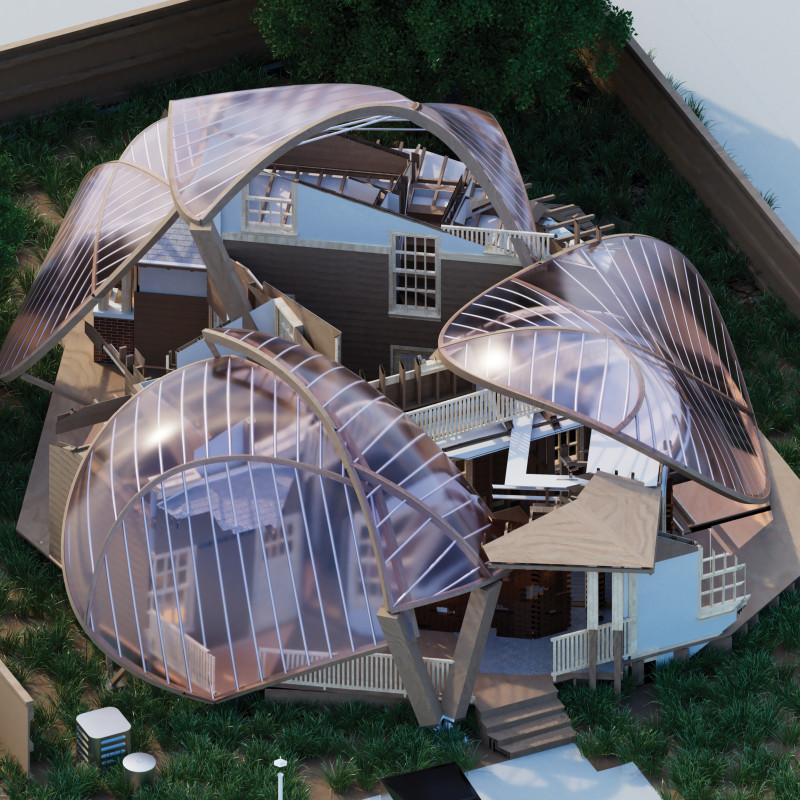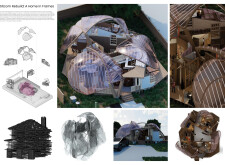5 key facts about this project
### Overview
The project located at Cornell House in Ithaca, New York, seeks to innovate within the realm of residential architecture by reinterpreting living spaces as a series of interconnected frames. The intent is to foster community interaction and personal introspection through the exploration of dynamic forms and spatial relationships. By drawing inspiration from the narrative contexts found in sitcoms, the design symbolizes familiar domestic environments through its structural composition.
### Architectural Form and Spatial Configuration
The design features fluid, shell-like canopy structures that suggest adaptability and movement. Transparent roof membranes facilitate natural light penetration, merging indoor and outdoor spaces to enhance the living experience. Complementary angular wooden frames contribute both structural integrity and aesthetic complexity.
The interior layout encourages organic flow, blending communal and private spaces effectively. Centralized areas such as kitchens and living rooms facilitate interaction, while private rooms are positioned for tranquility and privacy. This configuration supports various social scenarios, embodying the project’s vision of dynamic living environments.
### Materiality and Sustainability
Key materials include a transparent membrane for the roof, which diffuses light and creates an ethereal atmosphere. Locally sourced timber provides warmth and a connection to the site's geography, while glass and acrylic panels in the façade enhance visual connectivity with the surroundings. Concrete forms the foundation and structural elements, ensuring durability.
The project emphasizes sustainability by employing local materials and adaptive forms that respond to environmental conditions. The use of transparent materials improves energy efficiency by maximizing daylight and supports a dialogue about indoor-outdoor living. Technological advancements in architectural visualization also play a significant role, allowing for detailed contextual representations to guide the design process.


















































